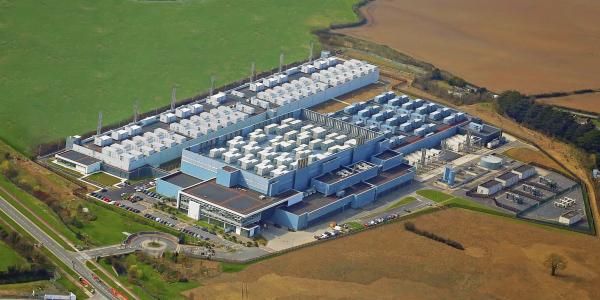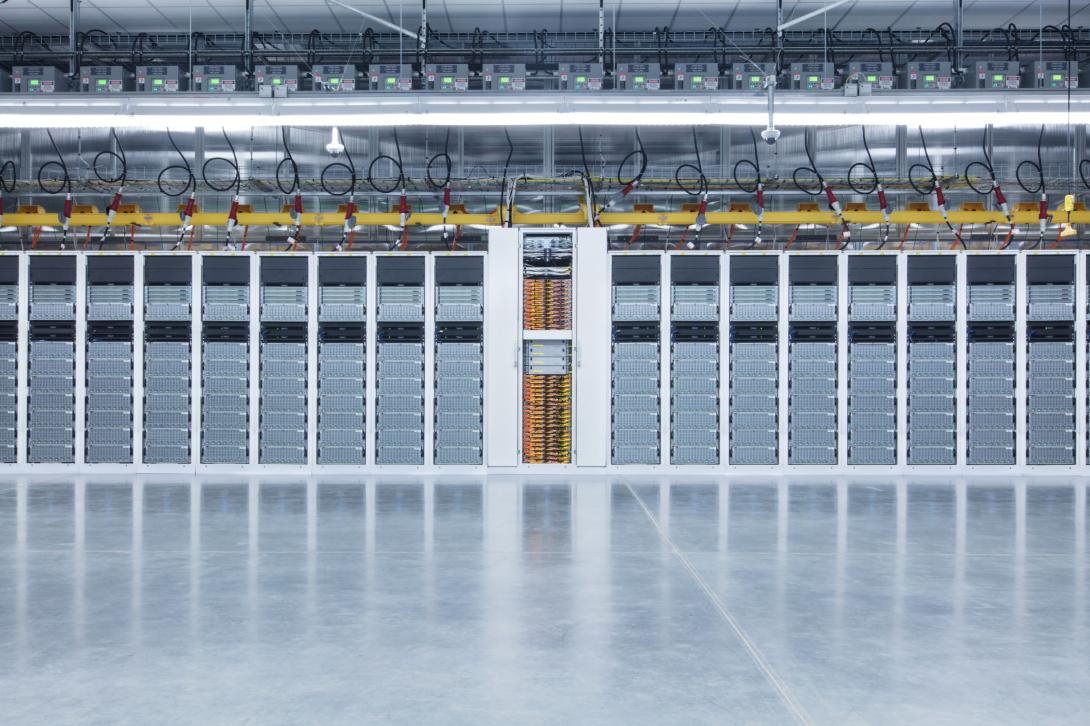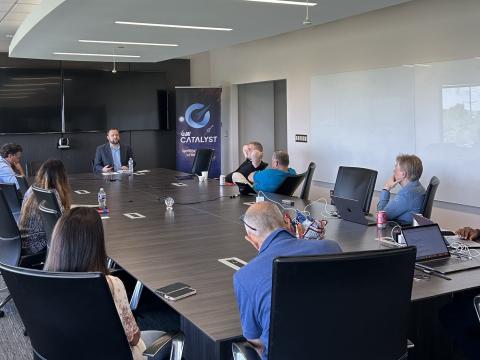A Smarter Commercial Cloud
Heavy hitters in the commercial cloud industry, such as Microsoft Azure and Amazon Web Services, are pushing cloud-computing capabilities to what they refer to as the intelligent edge. They are connecting Internet of Things devices and mobile applications with ever-expanding cloud capabilities and the advanced computing of artificial intelligence to create a so-called intelligent cloud, pushing out the results of advanced processing and data analysis to a user’s fingertips.
“If you think about those little devices sitting around, an average IoT [Internet of Things] device, it actually is a little computer,” says Julia White, corporate vice president for Azure at Microsoft. “There’s actually real capability on these devices, even small ones. And so this compute sitting right there in the physical world can connect up to the cloud. Data collected locally and analyzed locally on that IoT device is connecting up to the cloud for more global analysis, to understand what’s happening with the trends and add more insights with the big power of the cloud.”
White explains that Microsoft Azure is investing heavily in the IoT as it relates to cloud. The effort will extend its cloud portfolio, which includes a broad set of technologies from core infrastructure—compute, networking and storage—to a platform of application modernization capabilities for web and mobile applications and a line of business applications, workflows and technologies that enable operational and analytical data.
“What you should expect to see from us over the next six to 12 months is certainly a lot of investment in IoT, particularly in the government space,” White shares. “That ability to run your application or parts of your application locally and work in conjunction with the cloud is super important. It’s an area we’ve been focused on from basically the beginning of Azure and will continue to be expanding across the hybrid cloud as well. It all kind of converges in this idea of intelligent cloud, intelligent edge. So big investments on that front.”
Azure has a project with U.S. embassies featuring IoT devices connected to a smart building environment. The devices connect to the cloud to share information and data about the quality of ambient air inside the buildings across the world. “We have government customers collecting air quality information so that they can understand air quality across different regions,” she explains. The capability is delivered wirelessly, and allows for updates to the application over time, as well as the ability to study additional metrics such as temperature or wind speed, White adds.
On a large scale, connecting IoT devices to the cloud enables the ability to run environments as one data center.
“[We] don’t treat them just like individual devices,” White says. “People are running thousands and thousands of these devices, so [it is] running them like a big data center, with different pieces of compute everywhere, with management, security, identity and those type of capabilities in managing your IoT ecosystem.”
White shares that another key area of cloud-related investment centers on artificial intelligence (AI). “Essentially every application is going to have AI as we move forward, whether it’s a more personalized experience for the user, or more relevant processing from the back end or the front end, there’s going to be machine learning helping improve all the experiences,” White says. “That also extends even to the edge.”
Azure announced last November the ability to “run AI on the edge,” defined as the ability to take Azure AI capabilities and run them locally, on a data center, on a device or out in the field, White says. “The edge and AI come together quite often because the use cases of AI do come to play both in running things locally as well as in the cloud and those work together.”
Meanwhile, Amazon Web Services (AWS), with its vast cloud offerings, is placing emphasis on another aspect of AI, implementing machine learning, says Mark Ryland, director, Office of the Chief Information Security Officer, AWS. “We’re really trying to bring machine learning to the masses,” he notes.
Although machine learning and some of the algorithms have been around a long time, more data is now available to train algorithms, and thanks to the cloud, which makes the data sets accessible, it is less inexpensive to store vast amounts of data, Ryland says. The emergence of general purpose graphical processing units—extremely highly parallel processors with thousands of cores—combined with cloud technology has become a perfect storm that has enabled the renaissance of machine learning, he says.
However, programmers are still having a hard time developing machine learning algorithms. “It’s still kind of a black art from the programming side,” Ryland explains. “Not many programmers really know how to build and run these deep learning models. So that’s where we focused a lot of attention in the last year.”
AWS is offering a product called SageMaker. “The purpose of that service is to make it so that the average programmer who is used to running procedural code or functional code can actually begin to utilize machine learning without having to start from scratch and become an expert in deep computer science principles,” he states. “The service makes it really easy to wire up and just experiment with the algorithms on small data sets and then automatically run even larger clusters once users are accustomed to it. So basically we’re trying to democratize the whole experience for programmers of using machine learning technology.”
AWS also is embracing a concept where the cloud platform acts as the server that manages computing resources, Ryland says.
“It is almost a megatrend that we see,” he says. “It is a move towards this model, which people call serverless. It’s kind of a funny name because of course there are still servers running the code or the database somewhere. But the programming model and the management model are such that it’s even more of an abstraction beyond the traditional kind of infrastructure abstractions of virtual machines or virtual databases. Instead you’re simply deploying your business logic as functions, and then the cloud platform takes care of securing the functions, and scaling them.”
It allows a user to just pay for the time it takes the code to execute. “It can be just a huge improvement in productivity of your programming staff and then from an operations perspective, there’s some operations almost eliminated except beyond some of the policies that you set in the programming model,” Ryland attests.
AWS offers a similar model for databases, referred to as a server database, “where you literally just deploy your coding and call this database end point and we will manage all of the machinery behind it, tearing up or shutting down when not in use or scaling up when it’s busy.”
The capability includes “all of the things that used to be more of a manual process or at least a process [for which] you had to write code to automate,” Ryland notes. “Frankly, we are kind of happily surprised to see how quickly some of our customers are adopting this model where they’re moving beyond the virtual machine management or even beyond containers.”
When combined with the cloud, these advancing capabilities are pushing powerful computational abilities out to unexpected environments. For example, AWS is working with NASA’s Jet Propulsion Laboratory to bring cloud-computing utility to the lab’s All-Terrain Hex-Limbed Extra-Terrestrial Explorer (ATHLETE) robot. AWS is streamlining the processing of high-resolution satellite images needed for guidance, positioning and situational awareness to drive the robot remotely. “By accommodating excess capacity on local machines and spare resources in the supercomputing center… developers can deploy massive computations on Amazon,” the company states.
The capabilities of the cloud will keep on growing, as it becomes more and more a ubiquitous platform for innovation and computation, Microsoft Azure’s White also stresses. The company is making sure that its certification requirements apply not just to the government cloud but also to its general public cloud. “That way governments can take advantage of the commercial cloud versus having to just use the government cloud. [The users will] get the latest and greatest innovations as soon as they come to the commercial market,” she offers.






Comments